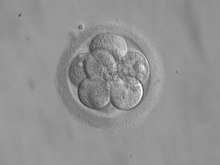I hope that plants are not sentient, but I also believe they are not sentient, for several other reasons too:
Every function and capacity demonstrated in plants and (rightly) described as “intelligent” and “cognitive” (learning, remembering, signalling, communicating) can already be done by robots and by software (and they can do a lot more too). That demonstrates that plants too have remarkable cognitive capacities that we used to think were unique to people (and perhaps a few other species of animals). But it does not demonstrate that plants feel. Nor that feeling is necessary in order to have those capacities. Nor does it increase the probability by more than an infinitesimal amount, that plants feel.
The “hard problem” is to explain how and why humans (and perhaps a few other species of animals) feel. It seems to be causally superfluous, as robotic and computational models are demonstrating how much can be done without feeling. But with what plants can do it is almost trivial to design a model that can do it too, So there feeling seems to be incomparably more superfluous.
To reply that “Well, so maybe those robots and computational models feel too!” would just be to capitalize on the flip side of the other-minds problem (that certainty is not possible), to the effect that just as we cannot be sure that other people do feel, we cannot be sure that rocks, rockets or robots don’t feel.
That’s not a good address. Don’t go there. Stick with high probability and the preponderance of evidence. The evidence for some cognitive capacity (memory, learning, communication) in plants is strong. But the evidence that they feel is next to zero. In nonhuman animals the evidence that they feel starts very high for mammals, birds, other vertebrates, and, more and more invertebrates. But the evidence that plants, microbes and single cells feel is nonexistent, even as the evidence for their capacity for intelligent performance becomes stronger.
That humans should not eat animals is a simple principle based on the necessities for survival:
Obligate carnivores (like the felids, I keep being told) have no choice. Eat flesh or sicken and die. Humans, in contrast, are facultative omnivores; they can survive as carnivores, consuming flesh, or they can survive without consuming flesh, as herbivores. And they can choose. There are no other options (until and unless technology produces a completely synthetic diet).
So my disbelief in plan sentience is not based primarily on wishful thinking, but on evidence and probability (which is never absolute zero, even for gravity, that apples may not start falling up instead of down tomorrow).
But there is another ethical factor that influences my belief, and that is the Precautionary Principle. Right now, and for millennia already in the Anthropocene, countless indisputably sentient animals are being slaughtered by our species, every second of every day, all over the planet, not out of survival necessity (as it had been for our hunter/gatherer ancestors), but for the taste, out of habit.
Now the “evidence” of sentience in these animals is being used to try to sensitize the public to their suffering, and the need to protect them. And the Precautionary Principle is being invoked to extend the protection to species for whom the evidence is not as complete and familiar as it is for vertebrates, giving them the benefit of the doubt rather than having to be treated as insentient until “proven” sentient. Note that all these “unproven” species are far closer, biologically and behaviorally to the species known to be sentient than they are to single cells and plants, for whom there is next to no evidence of sentience, only evidence for a degree of intelligence. Intelligence, by the way, does come in degrees, whereas sentience does not: An organism either does feel (something) or it does not – the rest is just a matter of the quality, intensity and duration of the feeling, not its existence.
So this 2nd order invocation of the Precautionary Principle, and its reckoning of the costs of being right or wrong, dictates that just as it is wrong not to give the benefit of the doubt to similar animals where the probability is already so high, it would be wrong to give the benefit of the doubt where the probability of sentience is incomparably lower, and what is at risk in attributing it where it is highly improbable is precisely the protection the distinction would have afforded to the species for whom the probability of sentience is far higher. The term just becomes moot, and just another justification for the status quo (ruled by neither necessity nor compassion, but just taste and habit – and the wherewithal to keep it that way).






